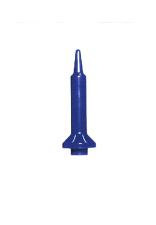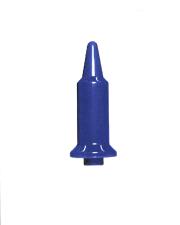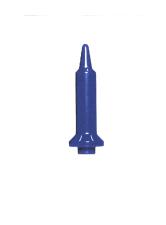EU Design law denies protection to designs which are solely dictated by a product’s technical function (art. 8(1) CDR). But how to determine if a product’s appearance is solely defined by its technical function in order to deny protection to a design?
German courts, for instance used to apply the “multiplicity of forms” test, where a design is not considered as “solely dictated by its function” if alternative designs exist which fulfill the same function. Instead EUIPO has (since the “Chaff cutters” case, R 690/2007-3, 22 October 2009) been using the “no-aesthetic-consideration” test, in which a design is solely dictated by its function providing every feature of the design was determined by technical considerations, regardless of the existence of design alternatives.
With decision C-395/16 DOCERAM GmbH v CeramTec GmbH of 8 March, 2018, the European Union Court of Justice (“CJEU”) has now indicated that EUIPO’s approach is the correct one.
The case, on a reference for a preliminary ruling from a German Court, concerned the validity of design registrations for ceramic weld-centring pins, and the CJEU was asked to clarify if the existence of alternative designs is decisive, in order to ascertain whether the features of appearance of a product are solely dictated by its function, or whether it must be instead established that function is the only factor which dictated those characteristics, and, in this latter case whether such a finding should be based on the perception of an “objective observer”.
The CJEU first of all observed that the expression ‘features of appearance of a product which are solely dictated by its technical function’ is an expression whose meaning is not defined in any legislative provision and an autonomous concept of EU law which must be interpreted in a uniform manner in all the Member States.
Thus, CJEU reasoned that if the existence of alternative designs fulfilling the same function as that of the product concerned were sufficient in itself to exclude applicability of Art. 8(1), a single economic operator would be able to obtain several registrations of different possible forms of a product incorporating features of appearance of that product which are exclusively dictated by its technical function. This would imply a monopolist result which run counter to the principles of the EU. Thus, the CJEU held that to determine whether the features of appearance of a product are exclusively dictated by its technical function, it must be established that the technical function is the only factor which determined those features, regardless from the existence of alternative designs.
Furthermore, in order to assess whether the features are solely determined by technical function, the CJEU held there is no need to base those findings on the perception of an ‘objective observer’”, but “all the objective circumstances relevant to each individual case”, including the existence of a design alternative (provided that they are supported by “reliable evidence”) must be taken into account.
This decision, which of course may result in a change of practice for some Member States’ Courts, is not really surprising, following a string of cases issued in regard not only to designs (cf. Easy Sanitary Solutions v Group Nivelles, C-361/15, on the irrelevance of the sector of use to determine novelty and individual character), but also 3d marks (cf. the Philips vs Remington case, C-299/99, where it was held that when then essential functional characteristics of the shape of a product are solely linked to its technical function, the sign of that shape cannot be registered, even if that technical result can be achieved by other shapes) and descriptive word marks (cf. Technopol vs. Ohim, C-51/10 where it was held that the availability of other signs, for designating the same characteristics of the goods/services referred to in the application for registration, is irrelevant in determining whether a sign is descriptive).
Whether this trend will continue or not is of course hard to predict, but as always, we’ll be here to monitor and report.
To make sure you do not miss out on regular updates of theKluwer Trademark Blog, please subscribe to this Blog.
_____________________________
To make sure you do not miss out on regular updates from the Kluwer Trademark Blog, please subscribe here.




